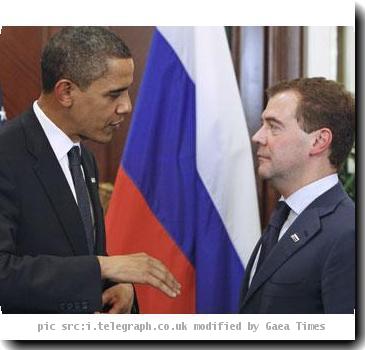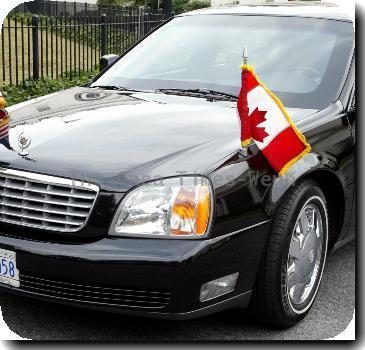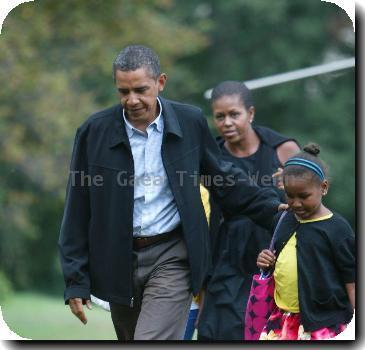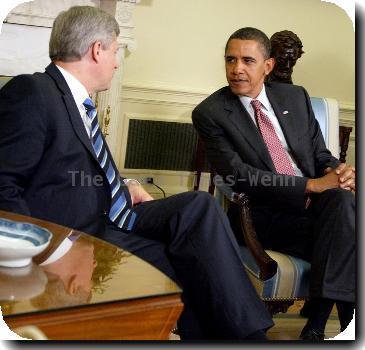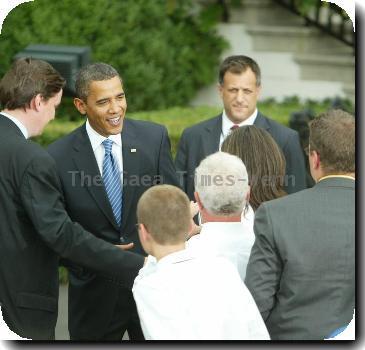Beloved by many, belittled by others, America’s Boy Scouts approach their centennial
By David Crary, APSunday, December 20, 2009
At 100, Boy Scouts say they’re still ‘essential’
POCONO SUMMIT, Pa. — A fifth-generation Boy Scout, 11-year-old Brad Corr is steeped in all the lore and tradition: the Scout Oath and Scout Law, campcraft and community service, the daily doing of good deeds.
If he were recruiting a friend for the Scouts, though, what would be his best pitch? “We got to build catapults and launch pumpkins from them.”
Old-fashioned fun is part of the Scout heritage. So is doing one’s duty to God and country. And so too is controversy. As the Boy Scouts of America heads toward its 100th anniversary in February, its first century adds up to a remarkable saga, full of achievement and complexity.
On one hand, no other U.S. youth organization has served as many boys — an estimated 112 million over the years — and is so deeply ingrained in the Norman Rockwell version of American popular culture. It can boast of a congressional charter and a long, unbroken string of U.S. presidents, including Barack Obama, serving as its honorary leader.
On the other hand, in both the courts and the public arena, the BSA has doggedly defended its right to exclude gays and atheists from its ranks, overriding requests from some local units to soften those policies.
“We do have folks who say we probably should rethink this,” Bob Mazzuca, the chief Scout executive, said in an interview. “We can agree to disagree on a particular issue and still come together for the common good.”
The Scouts — though their numbers have dropped in recent decades — remain a pervasive presence across America, vibrant in many suburbs and heartland towns, pressing minority recruitment campaigns in urban areas where enrollment often has lagged. Mazzuca and others in the Scouts’ extended family view the centennial as an opportunity to look forward as well as back.
“We’re going to reintroduce folks to the impact Scouting has made and the reality that Scouting is more essential today than it’s ever been before,” he said.
No centennial campaign is needed to convince the Corr family that Scouting is essential. They’ve been engaged since 1928, when Edgar Corr became scoutmaster of Troop P-2 in Easton, Pa., and his son, Andrew, became one of the Scouts.
Andrew’s son, Ted Corr, now 71, became a Scout in 1950 and remains active as a unit commissioner. Warren Corr, Ted’s 40-year-old son, earned his Eagle Scout rank in 1987 and has served in various leadership posts since then. And Brad, Warren’s son, joined Cub Scouts in 2004 and crossed over into Boy Scouts last February as one of more than 100 members of Troop 29 in Forks Township, Pa.
A sixth grader, Brad is a Tenderfoot, the first rank a Scout can earn, with merit badges in leatherwork, fingerprinting and space exploration, and has the ambitious goal of becoming an Eagle Scout within three years. He savors the camping trips and the do-it-yourself projects like building rockets and signal towers.
Some of Brad’s friends are in the Scouts, others have dropped out or never joined. A common refrain from many families, in Troop 29’s area and across the country, is that they just don’t have the time for Scouting.
For the Corrs, though, forgoing Scouting isn’t an option — even with Brad playing soccer, basketball and lacrosse, as well as cello and drums in the school band.
“Scouting gives enough flexibility that boys can do all kinds of activities — it’s not one or the other,” said Warren Corr. “If they’ve got other stuff to do, they take care of it. You don’t have to go to every meeting.”
Many parents, as well as their sons, feel overstretched, he said, posing a challenge for Scout leaders in recruiting enough adult volunteers.
“You always have some moms and dads willing to step up, and others who hang back,” Corr said. “But if you approach them and ask, 99 times out of 100 you’ll get a yes.”
For the boys, said Corr, a big draw is “doing some cool stuff.”
But as a former Scout turned adult leader, he sees a bigger picture.
“It’s about leadership, the confidence that comes with accomplishing something, the service to your country and community,” he said. “When you’re in Scouting, even three or four years of it sticks with you for the rest of your life.”
Ted Corr, the family patriarch, joined son Warren and grandson Brad for an in-depth discussion of Scouting at Camp Minsi, a 1,200-acre lakeside Scout facility in Pennsylvania’s Pocono Mountains.
The biggest changes he’s seen in 60 years of Scouting?
“Aerospace and computer merit badges,” Ted Corr replied. “As a kid growing up in the 1940s, who’d have thought it?”
And the worst change? Corr answered by brandishing his cell phone.
“They take these on camping trips now,” he grumbled good-naturedly.
Had cell phones been around in 1909, or the GPS devices that Scouts now sometimes use for orienteering, perhaps the Boy Scouts of America wouldn’t have come to be — at least not in the manner depicted in the BSA’s legendary story of the “Unknown Scout.”
According to this tale, American businessman William Boyce became lost in the London fog, and was guided to his destination by a helpful youth. When Boyce offered a tip, the boy replied that he was a Scout (they were formed in Britain in 1907) and couldn’t accept money for doing a good turn.
Boyce was so impressed that he studied up on British scouting and incorporated the BSA on Feb. 8, 1910.
By 1917, the organization already was an American icon. During World War I, Scouts contributed to home-front activities by selling Liberty Loan bonds and planting war gardens. They expanded their efforts in World War II, collecting rubber and aluminum, distributing civil defense posters, assisting fire brigades.
The BSA grew steadily over its first six decades, with membership peaking at more than 6 million boys and adult leaders in 1972. As of 2008, the total had dropped to under 4 million — 2.83 million boys and 1.13 million adults.
Reasons for the membership decline are manifold — the explosion of other after-school activities and sports, a perception among some families that the Scouts were too old-fashioned or conservative, and sporadic scandals that generated bad publicity while undercutting the BSA’s own commitment to integrity. Among the problems:
—Allegations in several states that membership rolls of some Scouting programs were inflated to boost contributions that were based on enrollment. A Scout official resigned in Atlanta and auditors found that nearly 5,000 boys were falsely registered in an inner-city program. In response, the Scouts tightened verification of enrollment data.
—Several sex-abuse cases involving troop leaders and BSA officials, including Douglas Sovereign Smith Jr., who ran a Scout task force combatting sexual abuse and was sentenced to eight years in prison on child pornography charges. These cases prompted the Scouts to strengthen background screening and awareness programs.
Perhaps the biggest long-term jolt to the Scouts, however, came in the form of a legal victory — the June 2000 ruling by the U.S. Supreme Court which said the BSA, as a private organization, had a right to exclude gays from its adult and youth ranks.
The Scouts’ national leadership welcomed the ruling, but it prompted numerous local governments and charities to curtail support for the Scouts because the exclusionary policies toward gays and atheists violated anti-discrimination codes.
Kevin Cathcart of Lambda Legal, a New York-based gay rights organization, said the current Boy Scout executive council seems immovable on the membership debate, but he predicted change would come as today’s young people — shown in polls to be more open-minded about gays — mature into leadership roles.
“The world has changed immensely in these past nine years and the Scouts appear not to have changed at all,” said Cathcart.
Mazzuca, asked about the exclusion of gays, offered a reply that has become standard among Scout leaders.
“We recognize that not everyone is going to agree with us on this particular issue,” he said.
“We don’t live in a vacuum,” he added. “This issue is going on in every nook and cranny of our country. … We’re just not at the point where we’re going to be leading on this.”
As for the exclusion of atheists, the BSA leadership has signaled no interest in amending the Scout Oath, which includes a pledge of duty to God. Religion is fundamental to the Scouts; the Mormon, United Methodist and Roman Catholic churches are the largest sponsors of units across the country.
“That’s one reason we’re still as strong and viable as we are,” Mazzuca said. “We do believe that to become the best you can be, you need a belief in something bigger than yourself.”
Many atheists have a different view.
“The Boy Scouts are synonymous with American values and patriotism — like motherhood and apple pie,” said David Niose, president of the American Humanist Association. “By excluding atheists and secular Americans, they are essentially saying we cannot be good citizens.”
Niose’s association, and several allied groups, had urged Obama to turn down the honorary presidency of the Scouts until the exclusionary policies were changed. But the calls went unheeded, and Obama accepted the honorary position in March, as had all of his predecessors since William Howard Taft.
“I was there when a membership card was handed to him,” Mazzuca said of Obama. “He said he was proud to have it.”
Even as it defends its policies toward gays and atheists, the BSA has been striving over the past two decades to correct a long-standing underrepresentation of blacks and other minorities in its youth and leadership ranks. There have been various minority recruiting efforts under the BSA’s Scoutreach Division, and now a vigorous new campaign to recruit Hispanics — including a Spanish-language Scout Handbook.
But the ethnic gap remains wide. Though the BSA doesn’t have precise racial numbers because declaring ethnicity is optional, an analysis it commissioned last year indicated that about 11 percent of Scouts were black or Hispanic — compared to about 28 percent of the national population.
By contrast, the Girl Scouts of the USA — which has no formal ties with the Boy Scouts — says blacks and Hispanics now constitute 23 percent of its 2.6 million youth members.
The minority outreach is hard work, but the Boy Scouts are committed to it, Mazzuca said.
“This whole Hispanic phenomenon has become a huge part of our focus,” he said. “In the past, we thought we could just translate our materials into Spanish, and did nothing to truly understand the cultural institutions.”
Among those on the front lines of recruiting is Ron Timmons, director of field services with the Boy Scouts council in New York City.
Now 38, Timmons was a Cub Scout and Boy Scout in Brooklyn. His first paid job with the Scouts was cleaning offices — more recent duties have included recruiting missions into inner-city elementary and middle schools.
“When you walk in to a classroom with the Scout uniform on, you always have some giggles,” he said. “But when we start talking about the outdoor experience, the camping, rappelling and climbing, they kind of sit up in their chair. It’s cool to watch.”
Inner-city recruiters face multiple challenges, Timmons says: Many boys don’t live with both parents, and many families are hard-up financially, complicating the task of getting enough adults to enroll their sons in the first place and to help run a unit thereafter.
John Ward, 45, is scoutmaster for a predominantly Hispanic troop affiliated with a Roman Catholic church in Manhattan’s Inwood neighborhood.
“You have kids with low-income families — how do you get them to come camping when they can’t afford it?’ he said. “We’ll buy equipment and loan it out. We have uniform exchange programs. We tell the families, ‘We’ll work with you. We’ll find a way.’”
The recruiting challenges are different two hours away in northeastern Pennsylvania, where Glen Lippincott, 59, helps oversee Scouting activities in the small town of Sciota.
Lippincott says the local Scout unit, Troop 84, is holding its own with 21 active Scouts, but has struggled to attract boys from the black and Hispanic families moving into the region — often with a breadwinner making a daily commute of 90 minutes or more into the New York City area and feeling there’s scarce time left for an activity like Scouting.
“Us white, middle-aged leaders — we’ve tried to understand why we can’t get them involved,” he said. “Probably it will take a couple of generations.”
Scouting is a passion for Lippincott, who can theatrically narrate the “Unknown Scout” legend, has a collection of vintage Scout Handbooks dating back to the 1930s, and credits map-reading skills he learned as a Scout with helping his commanding officer avoid a friendly-fire incident during combat duty in Vietnam.
Lippincott has been active in Scouting for 50 of his 59 years — as Scout, scoutmaster, district chairman and a host of other short- and long-term positions. His wife, Donna, was the first female assistant scoutmaster in their Pocono district.
His family’s involvement with the BSA spans four generations, starting with his father, Jack, who joined the Scouts before World War II, and extending to his brother’s grandson, Cody Weiss, currently a Scout with Troop 84.
Cody, 13, joined other members of his troop — and a contingent of relatives — at a cookout in the fall on a hillside above a cluster of Lippincott family homes in Sciota. While his troop mates cooked beef stew and biscuits, Cody talked about the Scouting pursuits he likes best — camping trips, shelter-building, learning first aid. He aspires to be an Eagle Scout, yet he guessed that a sizable majority of his peers at school look down on Scouting as “not cool.”
That’s a common perception, one which the Scouts acknowledge. In fact, one of the key goals of the BSA’s strategic plan for 2011-2015 is “to be seen by youth as cool.” It hopes to reverse the nearly 40-year membership decline with innovations that might include a partnership with Major League Baseball.
“We’ve been slow to realize the changing landscape of how people form their opinions,” said Mazzuca, who noted that the Scouts are making greater use of social media such as Facebook, YouTube and Twitter to communicate and recruit.
He said the BSA plans to launch a $1 billion fundraising campaign and has hired McKinsey and Company, a renowned management consulting firm, to help modernize its structure “so we can be more nimble.”
“One of the magic parts of this adventure is that none of the bedrock things that made us who we are have to change for us to be more relevant and dynamic,” Mazzuca said.
He sees two contrasting forms of competition for the Scouts — youth sports and “unhealthy things” like video games.
“If our competition is some other recreation program, we deliver a whole lot more,” he said. “We can show empirically that an engagement in Scouting over four or five years means more likelihood of graduating from college, higher lifetime earnings.”
Glen Lippincott drew the contrast this way: “In sports, if you’re not good, you sit on the bench. In Scouts, nobody sits on the bench.”
Lippincott became emotional as he talked about Scouting’s core goal — to teach boys character-building skills that will last a lifetime.
“It’s a game with a purpose,” he said. “It gives you a moral compass on how you conduct yourself with other people.”
His words echoed those of 71-year-old Ted Corr, who — miles away, earlier the same day — also reflected on the essence of Scouting.
“It’s same as what my dad and granddad signed onto,” Corr said. “We’re transmitting values. It’s leadership. It’s attitude. It’s how you play the game.”
On the Net:
Boy Scouts of America: www.scouting.org/
Tags: African-americans, Barack Obama, Facebook, Government Programs, Hispanics, Municipal Governments, New York, New York City, North America, Outdoor Recreation, Pennsylvania, Pocono Summit, Political Fundraising, Recreation And Leisure, Twitter, United States, Youtube
